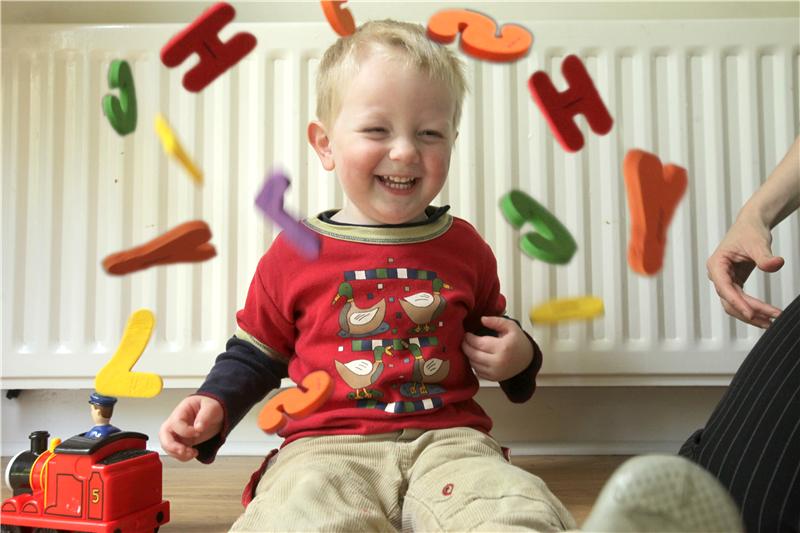Grammar May Be Hidden in Toddler Babble

The little sounds and puffs of air that toddlers often inject into their baby babble may actually be subtle stand-ins for grammatical words, new research suggests.
For their study, Cristina Dye, a Newcastle University researcher in child language development, made recordings of tens of thousands of utterances of French-speaking children between 23 months and 37 months old.
Dye and her colleagues analyzed each sound the kids made and the context in which it was produced. The team said they documented a pattern of sounds and puffs of air that seemed to replace grammatical words in many cases. Their findings suggest that toddlers may properly use little words (as, a, an, can, is) sooner than thought. [That's Incredible! 9 Brainy Baby Abilities]
"Many of the toddlers we studied made a small sound, a soft breath, or a pause, at exactly the place that a grammatical word would normally be uttered," Dye said in a statement.
"The fact that this sound was always produced in the correct place in the sentence leads us to believe that young children are knowledgeable of grammatical words. They are far more sophisticated in their grammatical competence than we ever understood."
Though Dye was studying French-speaking toddlers, she and her colleagues expect their findings to apply to other languages as well. She also thinks their results could have implications for understanding language delay in children.
"When children don't learn to speak normally it can lead to serious issues later in life," Dye said in a statement. "For example, those who have it are more likely to suffer from mental illness or be unemployed later in life. If we can understand what is 'normal' as early as possible then we can intervene sooner to help those children."
Sign up for the Live Science daily newsletter now
Get the world’s most fascinating discoveries delivered straight to your inbox.
Previous research has shown that toddlers, before they articulate full sentences themselves, may be able to understand complex grammar. A 2011 study published in the journal Cognitive Science found that as early as 21 months, children could match made-up verbs with pictures that made sense grammatically. For example, if they were told "The rabbit is glorping the duck," they would point to a picture of a rabbit lifting a duck's leg rather than the duck lifting its leg on its own.
The new research on the French-speaking toddlers was detailed in the Journal of Linguistics.
Follow Megan Gannon on Twitter and Google+. Follow us @livescience, Facebook & Google+. Original article on LiveScience.com.










